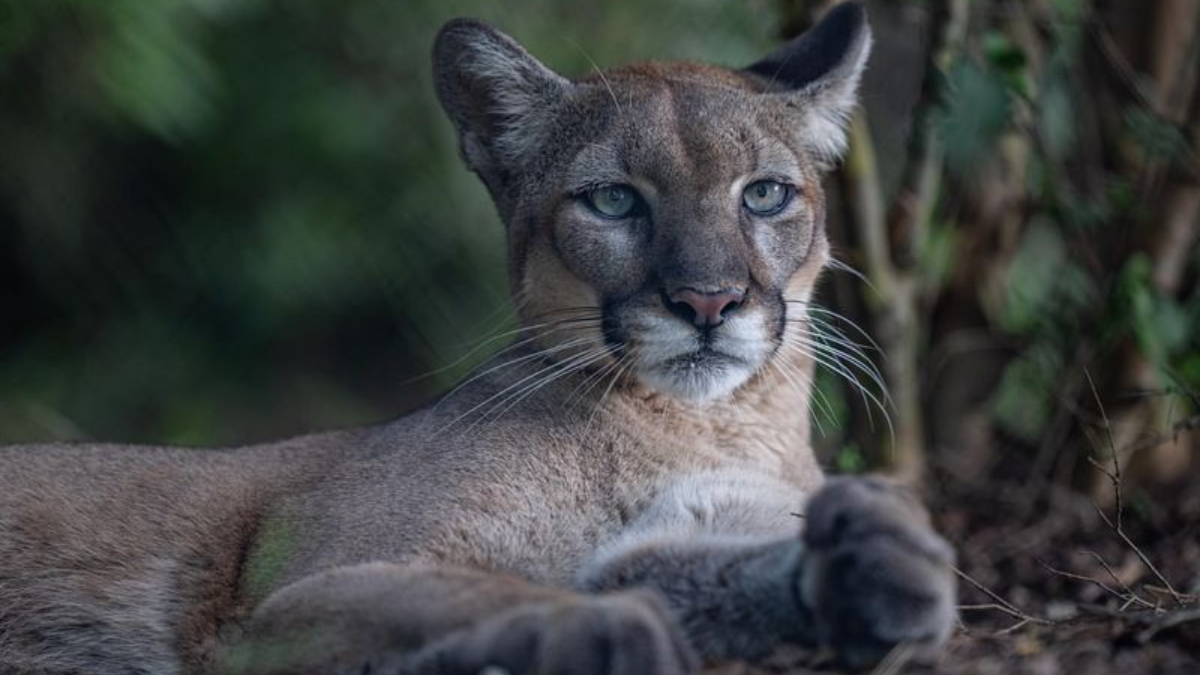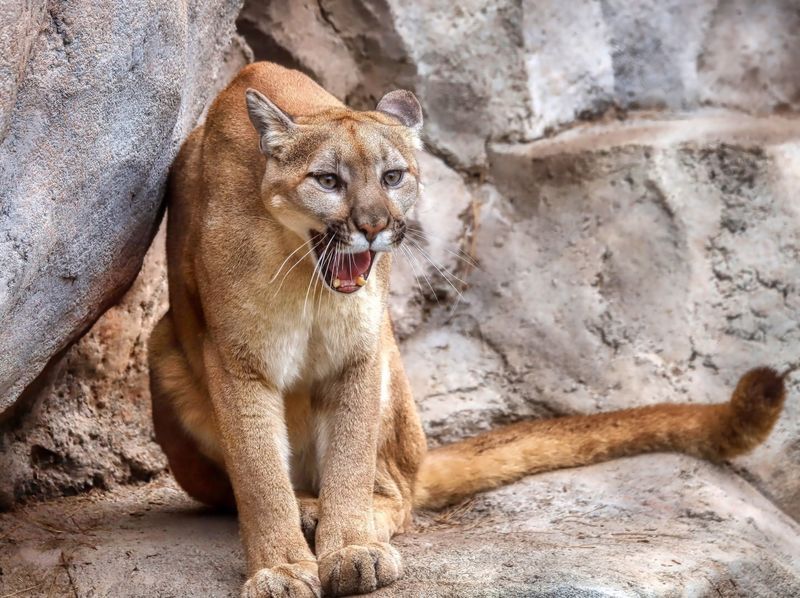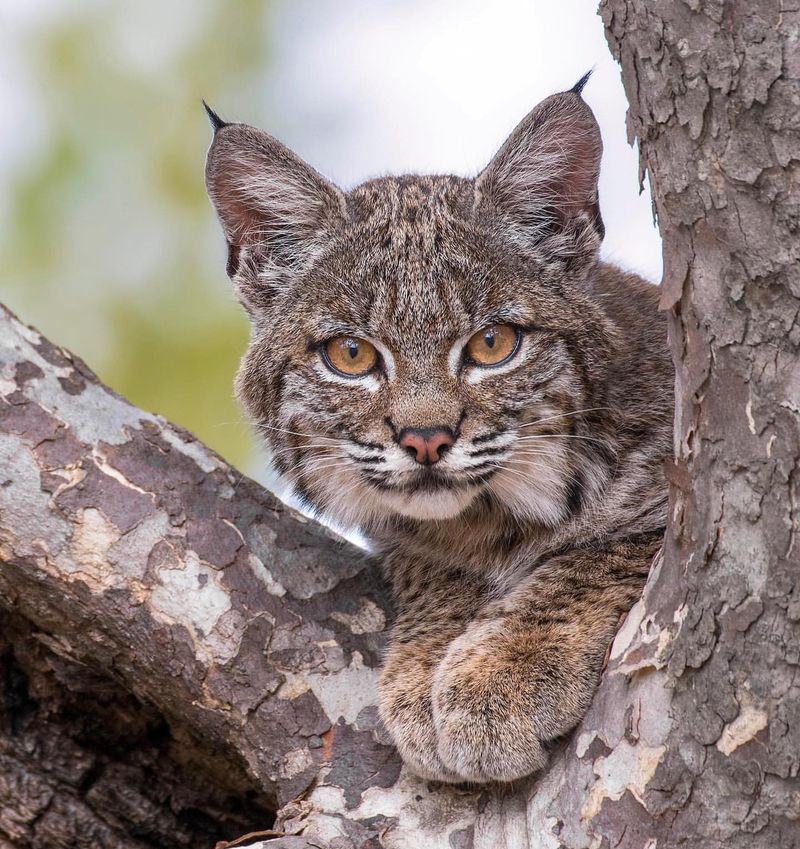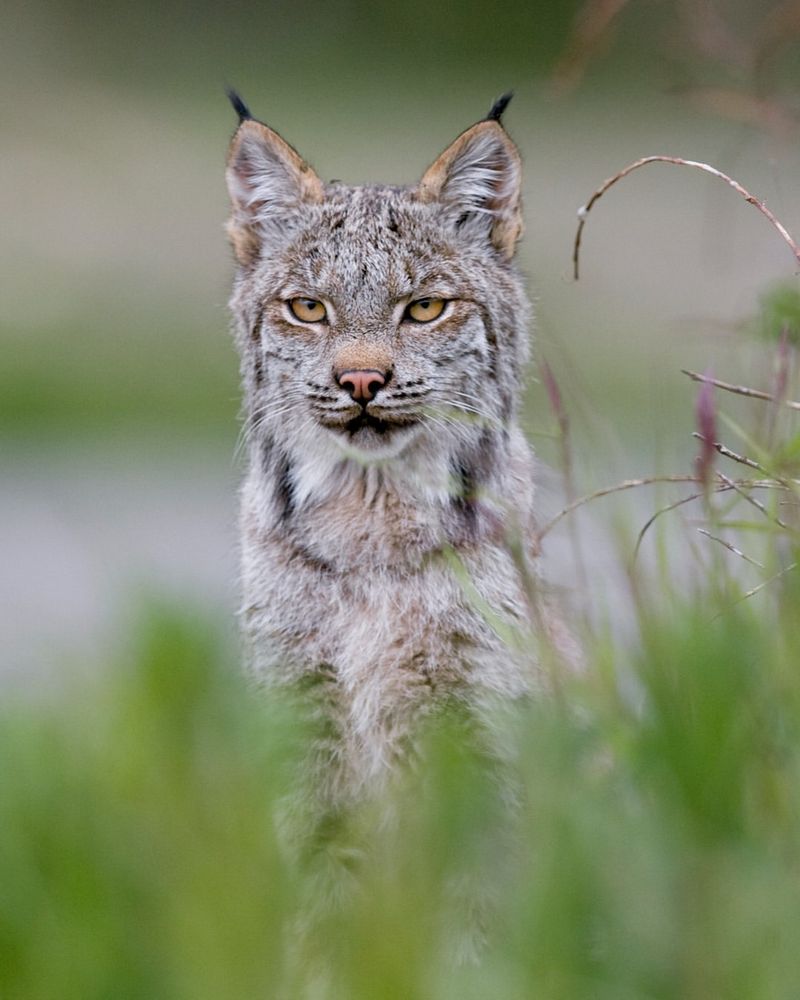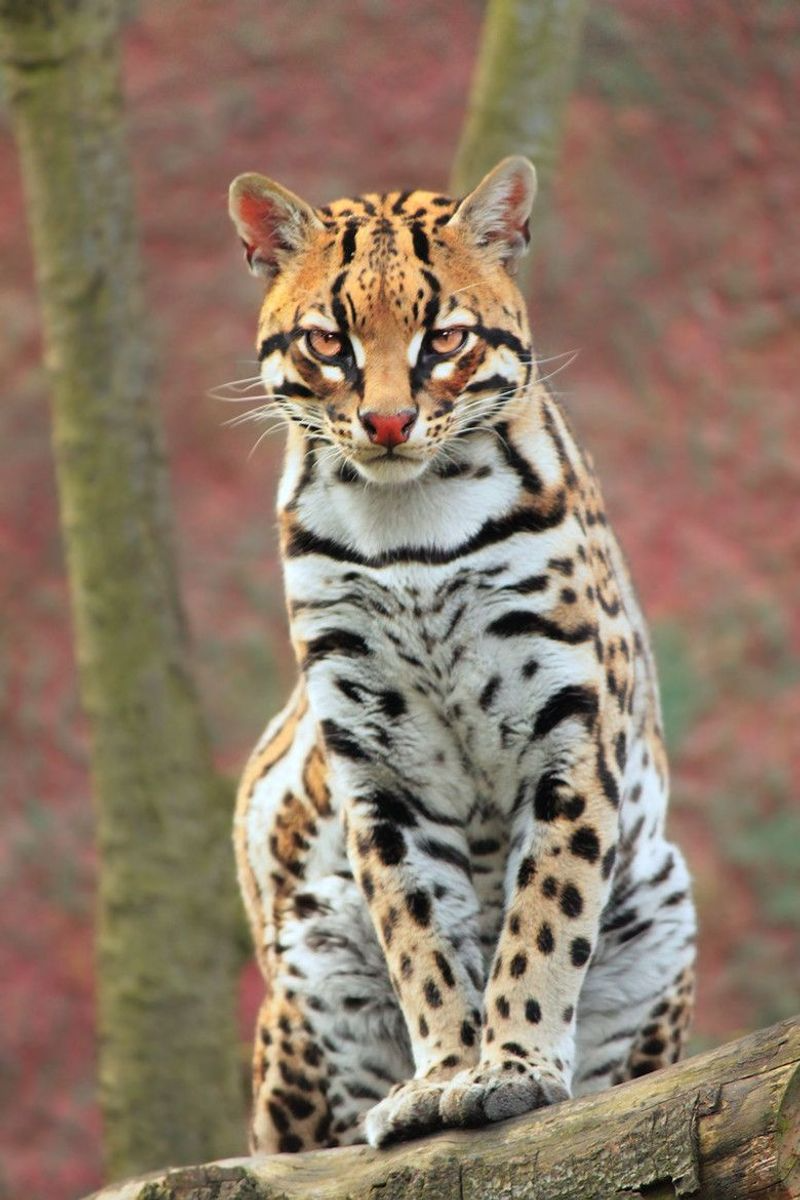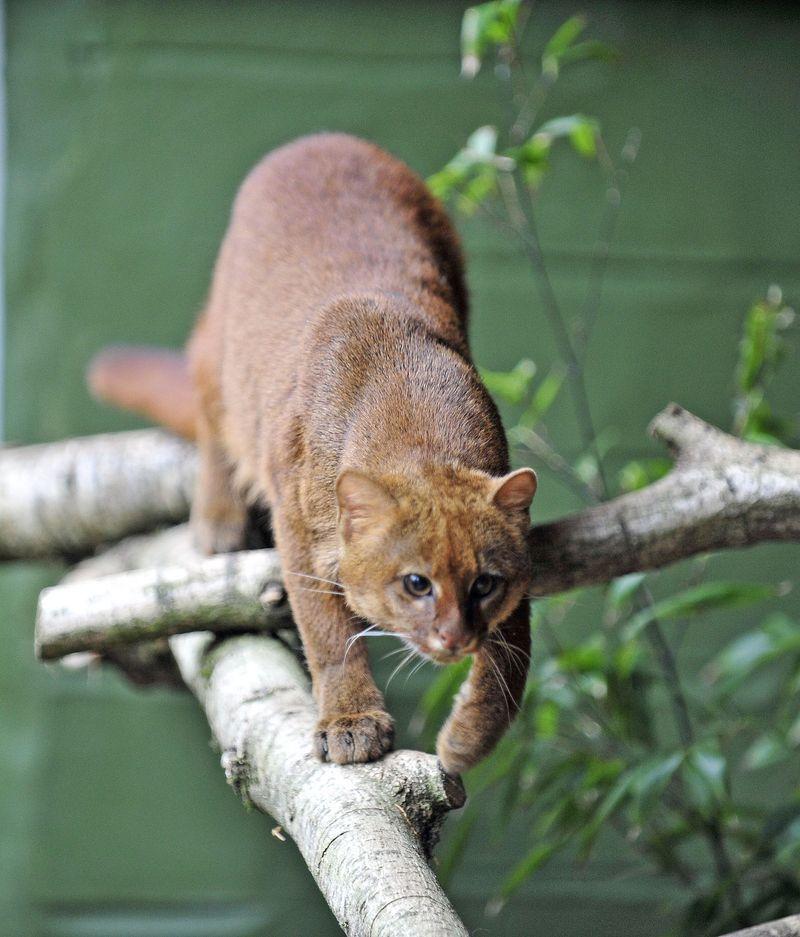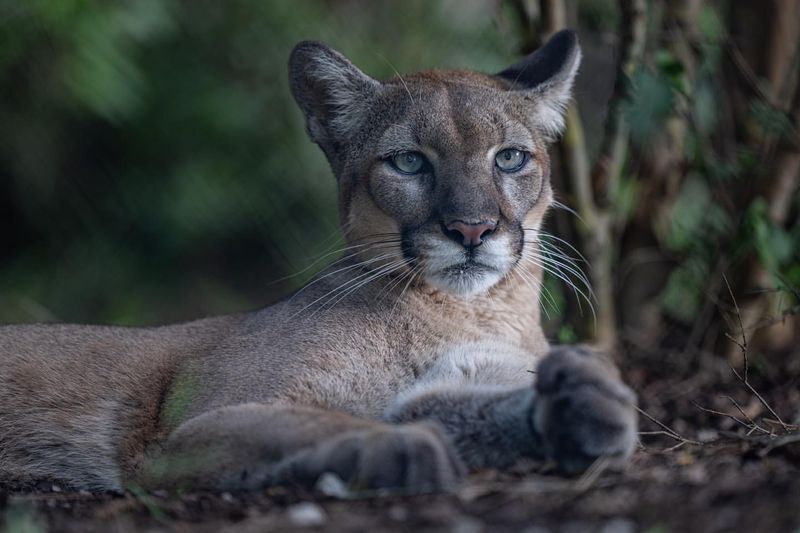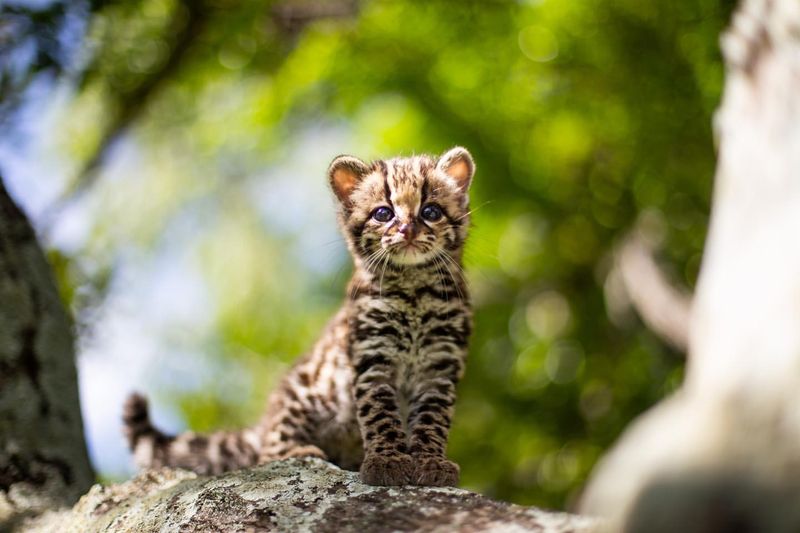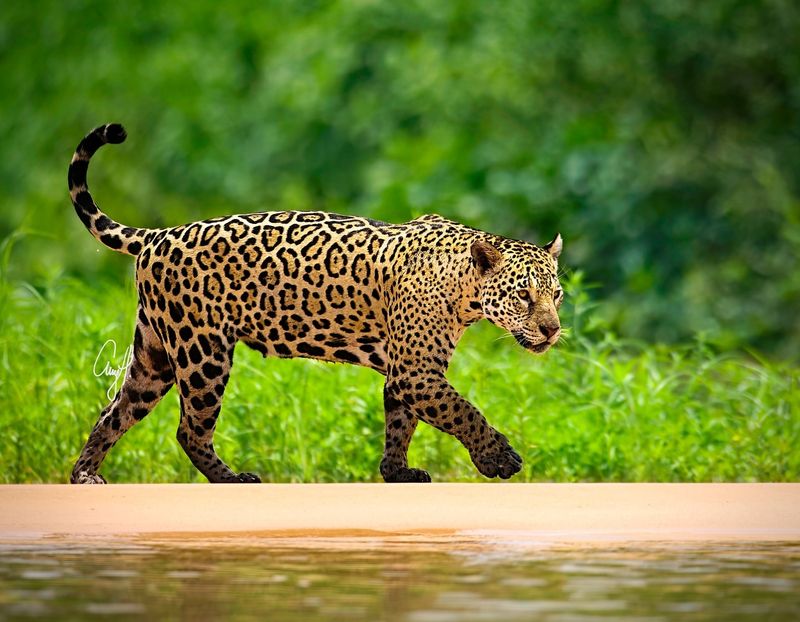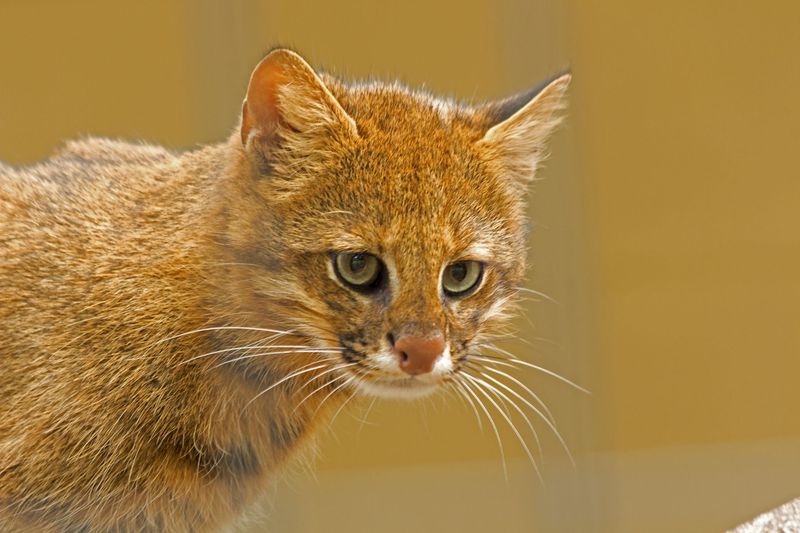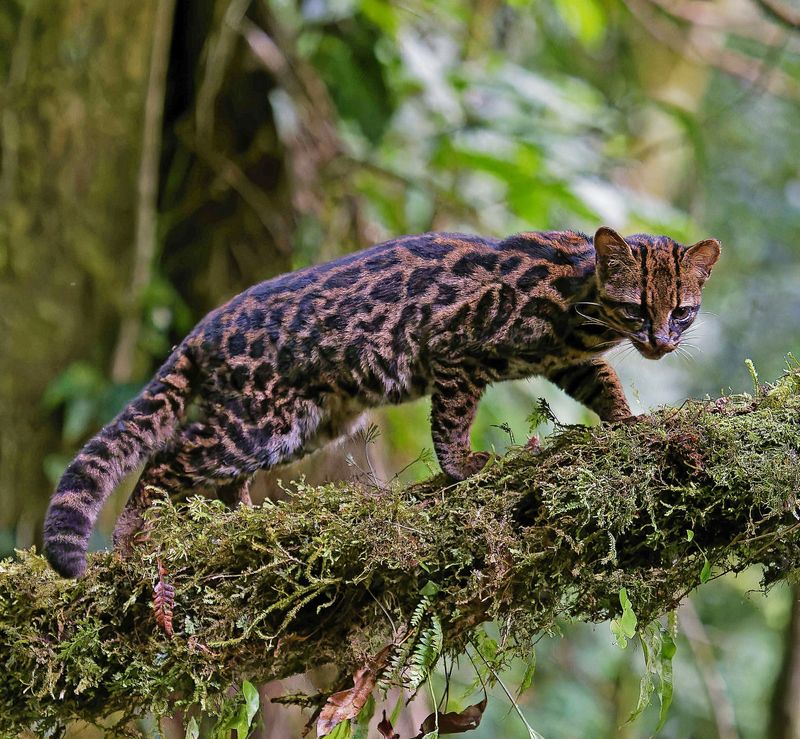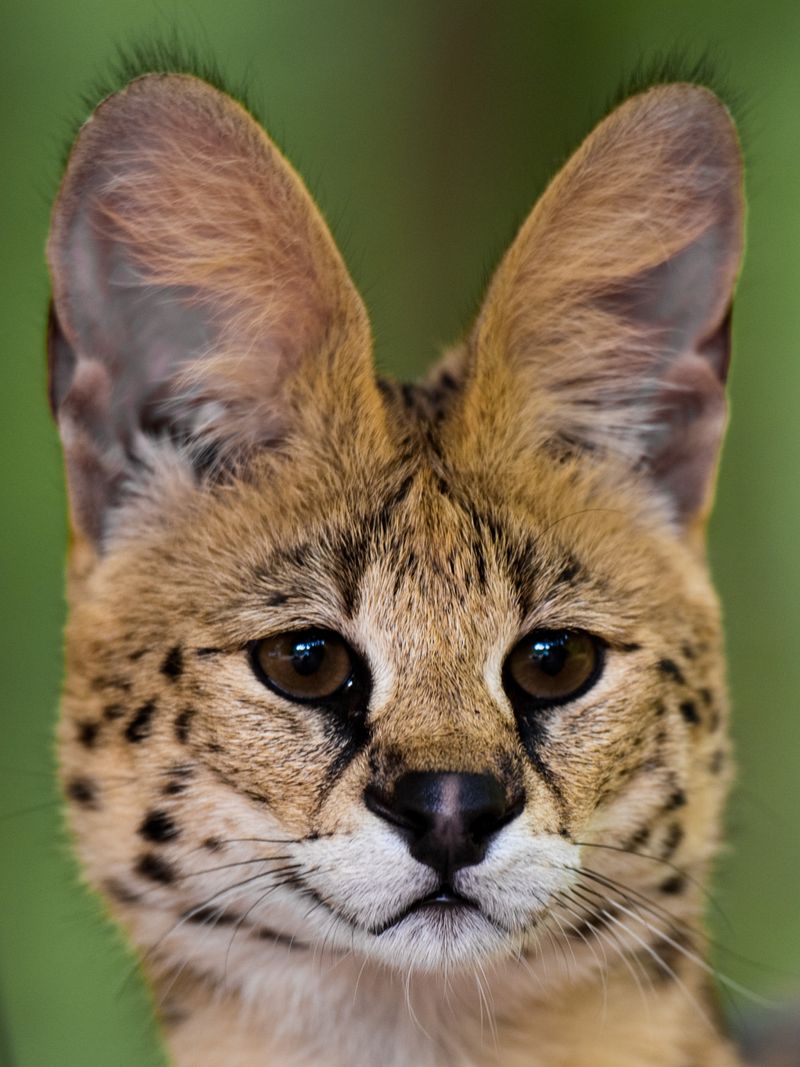📖 Table of Content:
North America is home to a fascinating array of wild cats, from the stealthy bobcat prowling through forests to the elusive jaguar lurking in the shadows of dense jungles.
These incredible felines, ranging in size, habitat, and behavior, play vital roles in maintaining ecological balance across the continent. Some, like the cougar, are widespread and adaptable, while others, such as the Florida panther, face the constant threat of extinction.
We’ll explore 11 of North America’s most captivating wild cat species, uncovering their unique traits, hunting skills, and the challenges they face in the wild.
Whether you’re a wildlife enthusiast or just curious about the secretive world of these majestic predators, this guide will introduce you to the untamed beauty of North America’s feline residents.
1. Cougar
Also known as the mountain lion or puma, the cougar is one of North America’s most widespread wild cats. Renowned for its adaptability, this feline can thrive in diverse habitats ranging from forests to deserts.
Cougars are solitary animals, primarily nocturnal hunters that prey on deer and smaller mammals. Their powerful build and incredible agility make them formidable predators. Despite their size, cougars are rarely seen by humans and are known for their elusive nature.
In addition to their impressive physical abilities, cougars play a vital role in maintaining ecological balance. By controlling the populations of prey species, they help ensure the health of their ecosystems.
2. Bobcat
The bobcat is a medium-sized cat native to North America, easily recognized by its distinctive tufted ears and spotted coat. Found in a variety of environments, from dense forests to suburban areas, bobcats are incredibly adaptable.
Known for their stealth and cunning, bobcats are primarily nocturnal hunters. They feed on rabbits, rodents, and birds, using their sharp senses to stalk and ambush prey.
Despite their solitary nature, bobcats are curious and often explore their surroundings.
3. Lynx
With its distinctive tufted ears and luxurious, thick fur, the Canadian lynx is perfectly adapted to the cold climates of North America’s boreal forests. These elusive felines are primarily found in Canada and Alaska.
Renowned for their incredible hearing and vision, lynxes are adept hunters, specializing in preying on snowshoe hares. Their large, furry paws act like snowshoes, allowing them to move silently across the snow.
Their presence is a testament to the health of boreal forests, and conservation efforts aim to protect these magnificent creatures from habitat loss and climate change impacts.
4. Ocelot
The ocelot, a small wild cat with a striking appearance, is native to the southernmost regions of North America, particularly Texas.
Its beautiful coat, featuring dark rosettes and spots, provides excellent camouflage in dense forests. Ocelots are nocturnal predators, primarily hunting small mammals, birds, and reptiles.
They are solitary creatures, navigating their territories with grace and agility. Despite their smaller size, they are fierce hunters, often compared to their larger feline cousins.
5. Jaguarundi
The jaguarundi, a unique and elusive wild cat, inhabits the southern parts of Texas and into Central and South America. Its slender body and long tail give it an otter-like appearance, setting it apart from other felines.
Jaguarundis are diurnal, preferring to hunt during the day. They feed on small mammals, birds, and reptiles, often using their remarkable agility to climb trees and navigate through dense foliage.
Known for their vocalizations, they communicate with a range of calls and sounds.
6. Panther (Florida Panther)
A critically endangered subspecies of cougar, the Florida panther is found exclusively in the southern regions of Florida. This majestic cat is a symbol of wilderness and conservation efforts in the state.
Florida panthers primarily inhabit the swamps and forests of the Everglades, where they hunt white-tailed deer, wild hogs, and smaller prey. Their solitary and elusive nature makes them difficult to spot in the wild.
The Florida panther is not just a state emblem but a testament to successful conservation initiatives.
7. Margay
This small and agile wild cat is found in the dense rainforests of Central America, occasionally venturing into southern North America. Its large eyes and distinctive spotted coat make it well-suited for life in the jungle canopy.
Margays are known for their incredible climbing abilities, which are often compared to those of monkeys.
Their arboreal lifestyle allows them to hunt for birds, fruit, and small mammals in the treetops, minimizing ground competition.
8. Jaguar
One of the most powerful wild cats in the Americas, the jaguar is primarily found in the tropical rainforests of Central and South America, with some populations in Mexico.
Its muscular build and striking rosettes make it an iconic predator. Jaguars are solitary hunters, known for their strength and ability to take down larger prey.
They play a crucial role in maintaining the ecological balance by controlling prey populations, such as capybaras and peccaries.
9. Pampas Cat
The pampas cat, a small and elusive feline, inhabits the grasslands and open habitats of northern Mexico and extends into South America.
Its tawny coat and bushy tail provide camouflage in the open landscapes. Pampas cats are primarily nocturnal, hunting rodents, birds, and reptiles.
Their solitary and secretive nature makes them difficult to study, adding mystery to their existence.
10. Oncilla
A small wild cat, the oncilla is found primarily in the cloud forests of Central America, with its range extending into parts of South America.
Its small stature and spotted coat make it a master of camouflage in its misty, forested environment.
These cats are primarily nocturnal, preying on small mammals, birds, and insects. Their elusive nature and preference for dense forest habitats make them rarely seen by humans.
11. Serval
With its strikingly long legs and oversized ears, the serval is a marvel of the feline world. Adapted for life in the grasslands, it uses its height to peer over tall grasses in search of prey. Its black-spotted golden coat allows it to blend seamlessly with the sun-dappled landscape.
Hunting primarily at dawn or dusk, the serval relies on its acute hearing to detect the slightest rustle of small animals.
This solitary hunter is known for its impressive leaping ability, often catching birds mid-flight. Truly, the serval is a master of stealth and agility.
